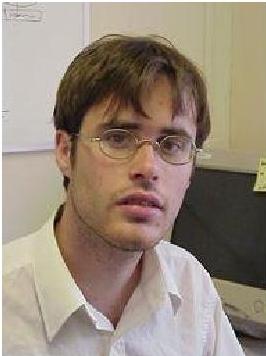Drs. A. W. (Anne Willem) Omta

Organic carbon pump in meso-scale ocean flows
Global warming might have serious ecological, economical, and political
consequences in the near future. Therefore it is of vital importance to
the world community to obtain reliable estimates of the rate at which
carbon dioxide will accumulate in the atmosphere, since carbon dioxide is
after water the main greenhouse gas. Unfortunately, there is still
controversy about which processes are mainly responsible for the removal
of carbon from the atmosphere, and the mechanisms behind these processes
are in many cases poorly understood. Carbon dioxide uptake by biota occurs
in the ocean and terrestrial environments; weathering of siliceous rocks
also removes carbon from the atmosphere. However, organic matter on land
is oxidized prior to incorporation into soils, and therefore marine
processes are probably more important for the global carbon budget than
processes on land. One marine process that is probably responsible for the
removal of a large portion of the emitted carbon dioxide is the so-called
Organic Carbon Pump. Algae bind carbon dioxide from the atmosphere to
build biomass. This biomass eventually sinks into the deep ocean as POM
(Particulate Organic Matter) where it is partly buried into sediments.
For the efficiency of the Organic Carbon Pump (vertical) transport of
nutrients and the algae themselves by flows in the ocean is very
important. In the oceans, there are many mesoscale eddies and rings
(diameters of about 100 km) 'stirring' the ocean, probably influencing the
concentration of organic carbon. Hence, the aim of this project is to
investigate and quantify the influence of mesoscale structures in the
ocean on the efficiency of the Organic Carbon Pump.
Methods and research plans
We make use of a nonhydrostatic flow model to simulate the mesoscale
flow structures coupled to a biological Dynamic Energy Budget model to
simulate the resulting plankton growth. There is a close collaboration
with Jorn
Bruggeman for the implementation of the biology and with the CWI
(Centrum voor Wiskunde en Informatica) for numerical methods to
simulate at a higher resolution. We will start by simulating an
idealised ring or eddy. If we understand the behaviour of this
idealised structure, we will extend the model to more realistic
structures and even whole basins. Finally we will try to apply the
model to other kinds of studies such as reconstructions of
productivity in the geologic past.
Anne Willem acquired the prestigious Rubicon grant from the National
Science Foundation (NWO) for his postdoc work at MIT, US. He defended
his thesis at 2009/03/06 in Amsterdam.
Go to projects' entry
